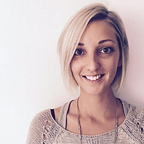It’s 2050. How can we use backcasting to get us to a future we want — in the midst of a global pandemic?
Recently my partner was commenting on a TV programme he had seen on Swedish TV called “Report from 2050” (“Rapport från 2050” på Svenska) which assumes that the Paris Agreement’s promise of zero emissions has been fulfilled, a climate change has taken place and that Sweden is climate neutral. The hosts of the show invited scientists and others to portray what everyday looks like in such a scenario, focusing on Mobility, Housing, Future’s work and food.
Interestingly enough Mobility looks like something we are experiencing now during COVID-19; Travel is shorter, aircrafts rare (and expensive) and people owning their own car is a privilege (the focus is on shared transport, electrified vehicles, and use of digitalisation for optimisation). Housing is using fossil free heating, we are living in more reduced spaces and they are all built with sustainable building materials. The future of work is affected by the change in mobility with more people working from home, as well as a big focus on automation and specialisation. The biggest change is the food landscape which has altered due to decreased imports and artificial fertilisers being replaced and we are all on a vegetable diet.
